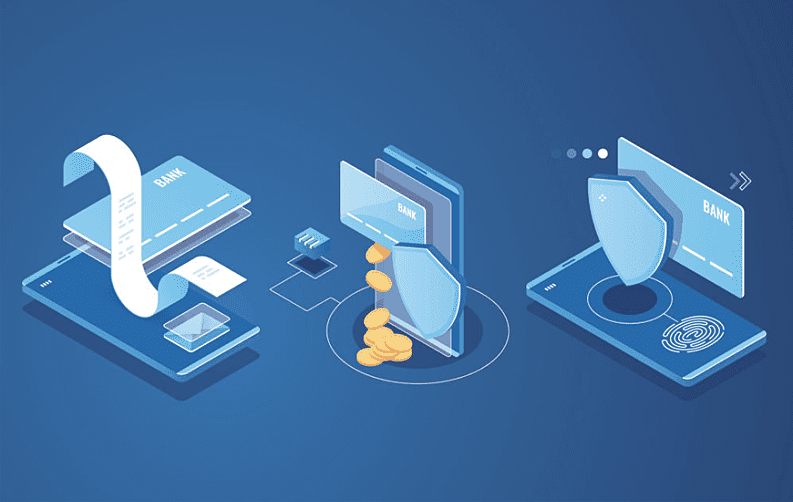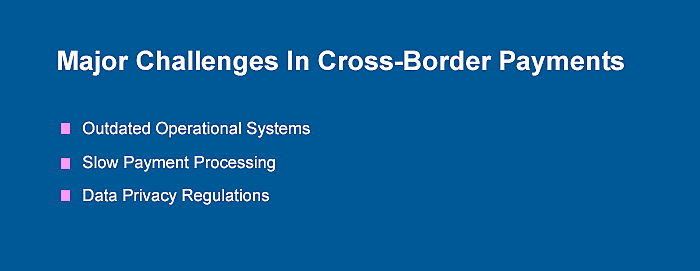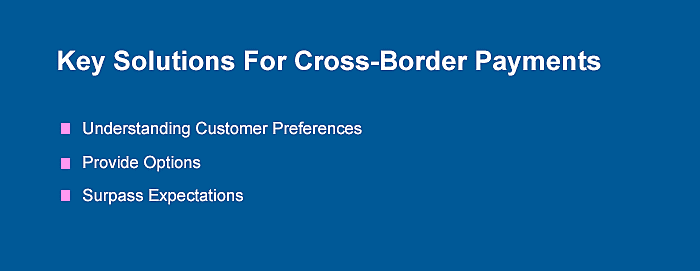
We can say many different things about the corporate payment processing system, but one argument that we can all agree on is that this thing is complex. Why? Well, think about all of the steps you need to make, not mentioning the involvement of different participants and parties.
Receiving your money internationally is a complicated process since there is no one omnipresent system in place for routing money across borders. Banks instead are connected through a rather dated correspondent system, which usually proves to turn out to be slow and financially inefficient.
All of that then creates an additional level of complicated operational challenges for our banks, but this is still not the biggest problem.
What terrifies these banks the most is that the unpolarized cross-border payment system will undoubtedly lead to dissatisfied customers that will then simply leave in order to bring their business elsewhere.
And losing both customers and money (not to mention their reputation) is something that no self-respected bank can allow to happen. This is why improving their cross-border payment situation, by employing new effective sharing information methods and implementing the latest bank processing solutions, is any bank top priority, nowadays.
Today we are going to be looking at the main challenges that banks face with cross-border payments, and some tips that can help them to streamline the process.
Major Challenges Of Cross-Border Payments
Here are some of the major challenges that are faced in cross-border payments:

1. Outdated operational systems
One of the biggest challenges banks face nowadays comes in the form of their messaging infrastructure. The largest number of cross-border payments are processed with the help of SWIFT MT103 messaging format, which is, putting it simply, a highly-reliable but rather limited in terms of the amount of information it can carry.
If you require some sort of additional information, it will usually be sent to you by an MT199 message system. And anything above the amount of MT103 and MT199 is will usually receive via email.
So, manual processing and non-automated messaging on both sides of the transaction are mainly what are causing major operational inefficiencies for banks. All of the time consumed on regulating those inefficiencies could have been spent on improving-value activities instead.
2. Slow payment processing
You probably already know that your payments can be stopped at any point in this long and complicated payment path. This results in both delays and unsatisfied customer experience for both parties involved.
The most common reasons for delays include incomplete payment information, AML checks and fraud, and the need for sanctions conduct. Due to the serious lack of digitalization and standardization in the sharing of this information your checks usually need to go through many channels of complex communication.
This often happens to be manually intensive, only leading to further delays. If the case is simple, your payment can be held for several hours, but if the situation is seriously difficult, your payment can be stuck in the system for weeks.
3. Personal data privacy regulations
Various regulations on what information can or cannot be shared, not mentioning the reading interpretations of those regulations only further complicate an already complex cross-boarding process.
Banks need to closely follow those regulations, investing a lot of their time trying to organize what information can be transferred across different jurisdictions. Take Pakistan for example: in this country, banks are not allowed to share any personal or business information of their clients, even within different departments of the same bank.
Try to think of a technology solution that can help you in resolving this situation, and you will immediately become a millionaire.
And do not also forget about the recent General Data Protection Regulation (GDPR) that will affect any organization that is processing personal information of the citizens of the European Union.
There is no doubt that it will have significant implications and restrictions on what information can and cannot be shared, which will only further complicate any transaction process.
Key Solutions For Cross-Border Payments
Below are some of the key solutions for cross-border payments, which are as follows:

1. Understand the preferences of your customer
When sending out an invoice you should be taking into consideration all of your customers' potential preferences, whether it's the currency they prefer to be billed or simply the language on which they will be receiving the invoice.
Take countries like Malaysia and China, for example, two countries where the local currency is being heavily regulated by the government. In these countries, most of the clients will be happy to receive the invoice in US dollars.
But in most of the other countries, clients will most likely prefer to get billing in their home currency, whether its euro, rubles, or any other currency type out there. Because if you bill your customer in US dollars, they need to pay you in US dollars, which can prove to be a complicated task like integrating blockchain technology for some countries and regions.
By giving your customers the choice of paying in their own native currency will save them a great deal of time since they will not have to deal with complex bank wire information or expensive foreign exchange fees and rates.
2. Present them with options
We think of credit cards as the fastest and most convenient way to pay, but it also can be a rather expensive one. Outside of the United States, Visa and Mastercard are undoubtedly the dominant force in the payment field. Whereas in China, for example, most businesses, as well as consumers, tend to prefer UnionPay, which is the most heavily dominated credit card on the market.
As for the larger payments, bank wires usually come as the best choice, but they are also a little bit complicated since you want to provide your customer with proper banking codes and details.
It is also a common theme with bank wires to have somewhat confusing foreign exchange rates and fees, which can sometimes cause the initial payment amount to become less when it comes to the biller. But no matter what option you think will be best for your customer, always lay down at least some of them before him - because every customer wants and should have them.
3. Surpass their expectations
Going back to the beginning of the article, cross-border payments are undoubtedly complex. This does not mean, however, that your customers will not be expecting the same type of seamless experience they have with their domestic purchases.
Businesses that will understand all of the complexity of cross-border payments matter better, and will easily win top positions on any customer preference list.
Also, if you are someone who is interested in reading more such interesting topics like blockchain technology then make sure to follow MobileAppDaily by clicking on the ‘Subscribe’ button.



















